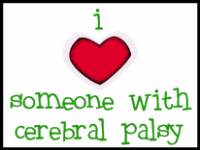 Welcome to Friday Facts! here on the Knowledge Safari blog. Each week we aim to shine the spotlight on various segments of special needs in order to raise awareness and provide information. This week our focus is on Cleft Lip and Palate.
Welcome to Friday Facts! here on the Knowledge Safari blog. Each week we aim to shine the spotlight on various segments of special needs in order to raise awareness and provide information. This week our focus is on Cleft Lip and Palate.About Cleft Lip and Palate
Cleft lip and cleft palate comprise the most common birth defect in the United States. One of every 600 newborns is affected by cleft lip and/or cleft palate.
A cleft lip is a separation of the two sides of the lip. The separation often includes the bones of the upper jaw and/or upper gum. A cleft palate is an opening in the roof of the mouth in which the two sides of the palate did not fuse, or join together, as the unborn baby was developing. Cleft lip and cleft palate can occur on one side (unilateral cleft lip and/or palate), or on both sides (bilateral cleft lip and/or palate). Because the lip and the palate develop separately, it is possible for the child to have a cleft lip, a cleft palate, or both cleft lip and cleft palate.
Cleft lip and cleft palate are congenital defects, or birth defects, which occur very early in pregnancy. The majority of clefts appear to be due to a combination of genetics and environmental factors. The risks of recurrence of a cleft condition are dependent upon many factors, including the number of affected persons in the family, the closeness of affected relatives, the race and sex of all affected persons, and the severity of the clefts.
A child born with a cleft frequently requires several different types of services, e.g., surgery, dental/orthodontic care, and speech therapy, all of which need to be provided in a coordinated manner over a period of years. This coordinated care is provided by interdisciplinary cleft palate/craniofacial teams comprised of professionals from a variety of health care disciplines who work together on the child’s total rehabilitation.
----------
Connect.Discover.Share at Knowledge Safari!































1 comment:
Really informative post. Cleft lips/palates can be hard for many parents who are not familiar with the disease. Good thing there are cleft palate repair charities like Operation Smile (they also have a good deal of info on this topic)
Post a Comment